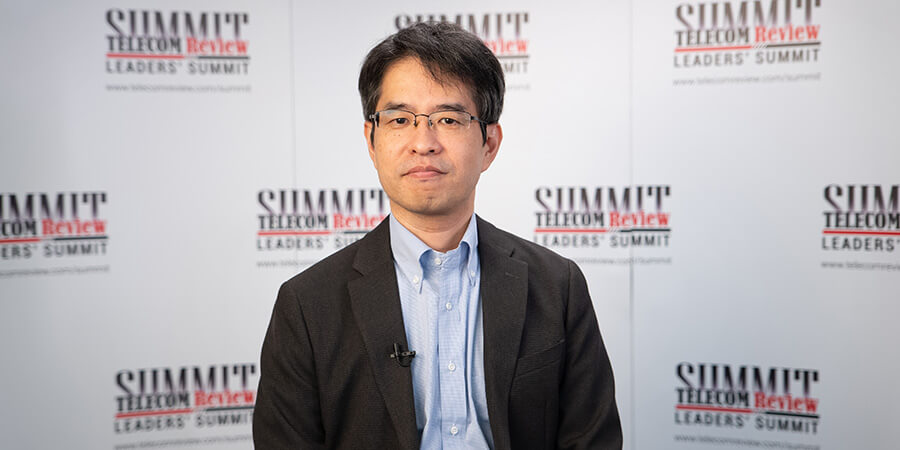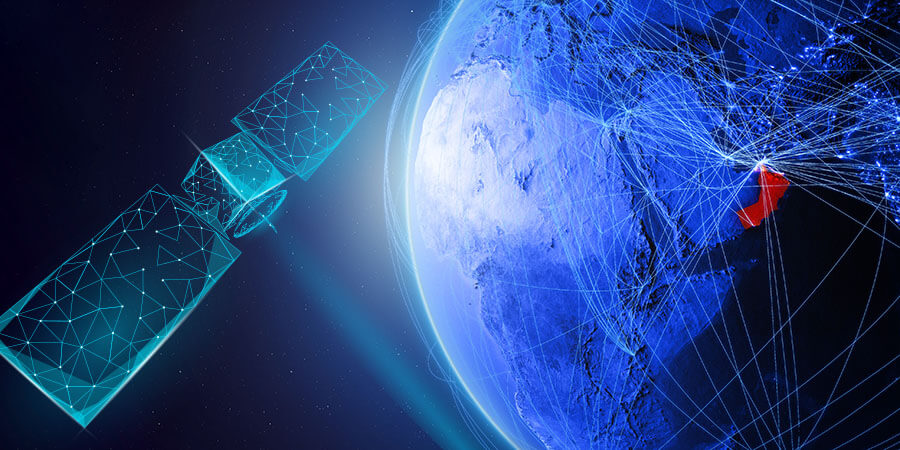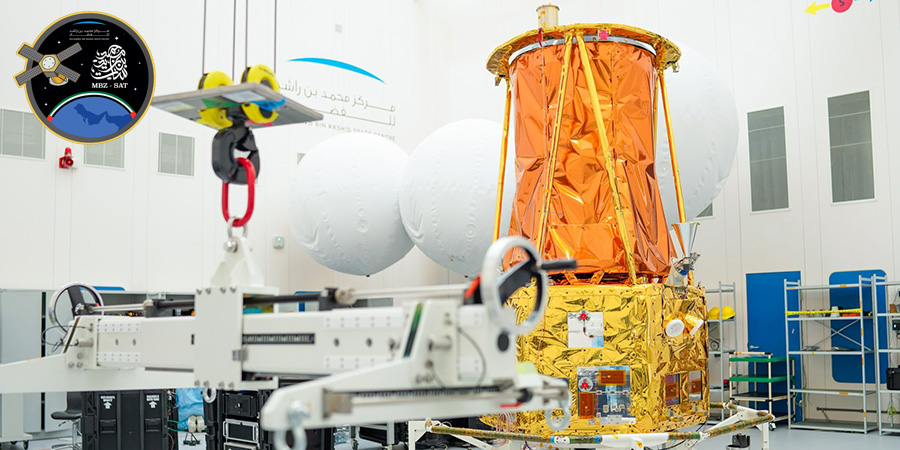Our technology-based societies are advancing at an unprecedented velocity. Human desire for progression and convenience has driven the evolution of incredible artificial intelligence, no longer just a figment of science fiction. With the advancement of smart cities and the internet of things, more and more devices will be connected in our new era of tech expansion such as drones, able to be remote controlled to deliver items or even conduct deadly attacks. Even personalized robots are becoming a reality. What's more, cloud storage has become the new norm, able to record transactions and obtain tons of virtual personal and professional data.
Artificial intelligence
Smart cities, which are popping up all around the world, are paving the way for the Fourth Industrial Revolution: A world of contemporary automation, rapid data exchange and smart manufacturing technologies. Vibrant, modern cities such as Singapore, Hong Kong and Dubai have embraced the smart city concept, using information and communication technologies to enhance performance, boost urban services and empower artificial intelligence (AI). Smart cities encompass broadband networks and e-services to sustain innovation ecosystems, growth and inclusion; therefore, blurring the lines between sci-fi and reality.
Countless sci-fi films have depicted futuristic worlds where robots have reached such a high level of artificial intelligence that they become an integral (and in some cases dangerous) part of society. For decades, the idea of intelligent robots was considered to be an idealistic concept. But with smart cities on the rise and the demand for advanced technology ever-increasing, the need for artificial intelligence is growing, and major technical advancements have proven that present artificial intelligence is well on its way to reaching sci-fi status.
The advancement of multiple datasets and "free or inexpensive" software development tools for researchers to work with, has led to quick advancements in A.I. in recent years. This crucial class of learning technology, known as "neural networks" has gone from being prohibitively expensive to relatively cheap thus, leading to a rapid uptake by tech giants such as Google, Facebook, and Microsoft. Each operates its own AI lab that conducts important research in the field and then publishes much of it for the academic community to use for future reference.
Google made waves in 2015 with their system that can learn to play and master old Atari games without directions. In addition, Facebook built a system which enables computers to describe images to blind people and Microsoft also contributed to AI advancement with a new Skype system that automatically translates from one language to another.
In 2015, Future Timeline reported on an incredible AI development in one of the most tech-advanced countries in the world. At Nanyang Technological University in Singapore, scientists manufactured and introduced one of the most advanced forms of AI in recent years, and they call her Nadine: A friendly robot "receptionist" able to remember names and previous conversations. Nadine looks very humanlike, with soft skin and brunette hair. She is able to express different emotions and personality traits, and can even recognize people she has previously met.
According to scientists at the university, with further progress in robotics driven by technological improvements in silicon chips, sensors and computation, "Physical social robots like Nadine are poised to become visible in offices and homes in the coming decades." The emergence of artificial intelligence like Nadine tells us one thing: It won't be long before the sci-fi films of the past depict our reality as opposed to a potential future.
In his article, My life with my robot secretary, author Mark Wilson writes for Fast Company about his experience using Clara: "A blob of algorithmic code assembled by the Y Combinator-funded startup Clara Labs." Clara is an AI assistant residing within a users' email whose support is activated by simply copying her into an email, thus introducing her to clients and schedules which are analyzed. The information is used by Clara to schedule meetings and make life easier for busy professionals.
"After the initial setup, where I listed my preferred location for coffee meetings and lunch meetings on Clara's site, all other settings were handled via email," says Wilson. "If I wanted Clara to give me a 15 minute buffer between meetings, I could just write her and tell her."
The extent of this artificial intelligence might seem far-fetched or too incredible for today's standards, and in a way that is the case. Because according to Wilson, an "unspecified" amount of people work at Clara Labs writing copy, checking every email that Clara drafts, and categorizing conversations repeatedly in order to teach Clara etiquette and the "nuance of conversation." Therefore, Clara isn't 100 percent AI, but still remarkably advanced.
Clara Labs founder, Maran Nelson, believes that the human contribution to Clara doesn't demean the scale or power of the Clara AI email system. "We have to get to a place where this thing doesn't need to be 100 percent automated or our company dies," Nelson told Wilson in an interview. "You want to provide an excellent service to a lot of people, even if it takes some time in some cases to give the right answer, intelligently."
Clara may not be fully AI, but is certainly capable of virtually reducing and assisting workload for a massive human force. After working for a month with the Clara system, Wilson's greatest realization was that he didn't really care if Clara was pure AI or not; rather, he felt that the true genius of Clara was that "she's a designed construct that gives everyday people the semantic keys to the power of micro-labor."
Cloud storage
With artificial intelligence on the rise and the need for huge amounts of data to be stored, the development of cloud storage is another significant form of technology that has propelled humanity into a futuristic realm. According to Big Data Made Simple, cloud storage is a service where data is remotely maintained, managed and backed-up.
Cloud allows users to store files online so that they can access information from any location with an internet connection. A recent study conducted with more than 800 business decision makers worldwide came to the conclusion that the number of organizations gaining competitive advantage through high cloud adoption has almost doubled in the past few years. It has been predicted that by 2017, the public cloud services market could exceed $244 billion.
There are various advantages to using cloud storage, according to Baiju NT, the editor and driving force behind Big Data Made Simple. One of the advantages he mentions is usability: "All cloud storage services reviewed in this topic have desktop folders for Macs and PCs. This allows users to drag and drop files between the cloud storage and their local storage." Baiju also mentions bandwidth, which allows users to avoid emailing files to each other, and instead allows them to send a web link through email.
Accessibility is an obvious advantage of cloud, and so is disaster recovery - probably one of the most recognized. "Cloud storage can be used as a back-up plan for businesses by providing a second copy of important files," says Baiju. "These files are stored at a remote location and can be accessed through an internet connection."
Lastly, Baiju mentions cost saving; a huge advantage for organizations where they can reduce annual operating costs by using cloud storage, which only costs about 3 cents per gigabyte to store data internally.
More and more data transactions are moving to the cloud today, with majority of personal and professional information stored online. Therefore, with so much data online, security has emerged as an imminent risk. As more users of cloud become enamored by its ease and individualized access to tools and information, privacy and security could slowly diminish. Hacking information is a very real threat that we face today with so much information being stored online.
But it goes without saying that cloud storage certainly isn't slowing down anytime soon. Just look at Uber, a hugely successful "taxi" company that uses the cloud to drive a mobile workforce allowing them to instantly deploy drivers and respond in real-time to demand. It's no wonder the company is being scolded by traditional taxi companies worldwide.
Cloud has paved the way for greater efficiency in business. Google even claims that its cloud hosts over 4 million applications. Urs Hölzle, the man responsible for building much of Google's technology, including its cloud, has big ambitions for it. "Five years from now, my goal is that all the CIOs of the Citibanks of the world are GCP (Google Cloud Compute) customers," he told the Business Insider. "Not because they were forced to but because they realize it's far better than doing it themselves."
While Amazon currently stands as the market leader in cloud computing services, credited with inventing the market and offering arguably the best cloud service out there, Google reportedly plans to run some of the world's most sophisticated datacenters in a bid to outdo Amazon, in addition to Microsoft, IBM, Oracle, Cisco and every other major IT company. Every tech-giant wants to get in on the lucrative technology.
Drone technology
Drones have also emerged in modern society as a revolutionary form of advanced technology, met with both praise and disdain. Decades ago, the word "drone" referred to the charismatic robots depicted in film like Star Wars. But today, drones are very real and have developed a number of uses such as flying surveillance cameras, delivery messengers and even weapons of war.
Edd Gent, a British science writer, discusses the uncertain but promising future of drone technology. He reflects on the first drone delivery in the United States in 2015 which he says was an "important milestone in the development of the new technology."
Amazon CEO, Jeff Bezos, first announced his vision for using delivery drones back in 2013 as a convenient way for his online retail corporation to get products to consumers faster and more efficiently. Bezos was later followed by Flirtey, an Australian startup company who partnered with Virginia Tech and NASA to build a drone that was able to carry ten pounds of medical supplies from an airfield in Virginia to a remote clinic about a mile away. Facebook also jumped on the bandwagon with their solar-powered Aquila drone - a massive robotic flier with the same wingspan as a Boeing 737 jetliner designed to circle around the stratosphere (the layer of Earth's atmosphere located between 10 to 48 kilometers above the planet's surface) and uses lasers to beam internet to the most remote corners of the world.
Drones are a modern form of technology, and therefore, have garnered restrictions for safety reasons. Before 2015, strict regulations threatened to halt the burgeoning drone industry. But in February 2015, the FAA, the agency responsible for regulating US airspace "released a proposed framework for the commercial use of small drones," writes Gent. The FAA decided that drones would only be allowed to fly during the day and within operators' visual line of sight. However, the FAA has "sped up turnarounds for so-called Section 333 exemptions that let companies use drones in the interim."
The agency reportedly granted 66 exemptions between September 2014 and March 2015, and soon started fast-tracking applications that were similar to previous requests, now amounting to nearly 2,000 such exemptions. It seems that whatever regulations are put in place, nothing will cease the pursuit of advanced technology and its potential for commercial use - especially when there is potential for profit.
In January 2016, Reuters reported that almost 300,000 recreational US-drone owners registered their unmanned flying vehicles in a new federal database which is intended to assist with addressing a "surge of rogue drone flights near airports and public venues." This particular registration, by the Federal Aviation Administration, was specifically for drones that weigh between 0.55 pounds and 55 pounds.
In January 2016, it was reported that US Congress was set to make a stand against the increasing use of drones, now that hundreds of thousands of recreational drones are in use. Amazon and Google, clearly looking to advance their goal of drones delivering packages from warehouse to doorstep, are pushing law makers to allow for experimental testing of drone delivery in sparsely populated areas and more research into development of delivery plans to prove that the use of drones can be safe and even beneficial (or in their case, profitable).
"Companies want to be able to benefit from drones by flying beyond visual line of sight, or near congested areas or over people, in a way that is safe," says Lisa Ellman, a lawyer at Hogan Lovells, which represents commercial drone hardware and software makers. "The FAA is taking steps in that direction, but slowly."
Many people remain wary of drone technology, and some even despise it, especially those who have had to deal with the consequences of drone warfare. In an article by Jack Serle for the Bureau of Investigative Journalism in 2015, he reports that at least 2,464 people have been killed by US drone strikes outside the country's declared "war zones" since Barack Obama took office. Since his inception, the total number of people killed is at least 314 civilians, while the number of confirmed strikes under his administration now stands at 456.
The International Affairs Review reports that the use of remotely controlled aerial vehicles as a weapon was first introduced during World War II: The German FX-1400, which consisted of a 2,300 pound bomb dropped form an airplane and controlled by a "mother-ship". The US first used UAVs (unmanned aerial vehicles) during the Vietnam War, when the Air Force used small, long range drones called Fireflies.
But extensive use of UAVs began with the Global War on Terror, mostly used for intelligence purposes, but also for surprise attacks from above, able to pinpoint an exact location and eliminate a target without interference. The CIA began to use drones to target al Qaeda operatives in the Middle East, particularly in Pakistan. In the article by Andrew Callam, he makes a worthy point: "Unmanned systems may lead to a safer type of warfare for US soldiers, but they will be unable to eliminate the inherent brutality of war."
While some deem modern technology to be ominous and unnecessary, others believe that it is revolutionary and essential for contemporary development. Whatever you think about drones, cloud storage, smart cities and artificial intelligence, you cannot deny that our modern societies are slowly beginning to resemble the sci-fi films of the past; ideas that were once thought to be fiction, that are now becoming reality.























































